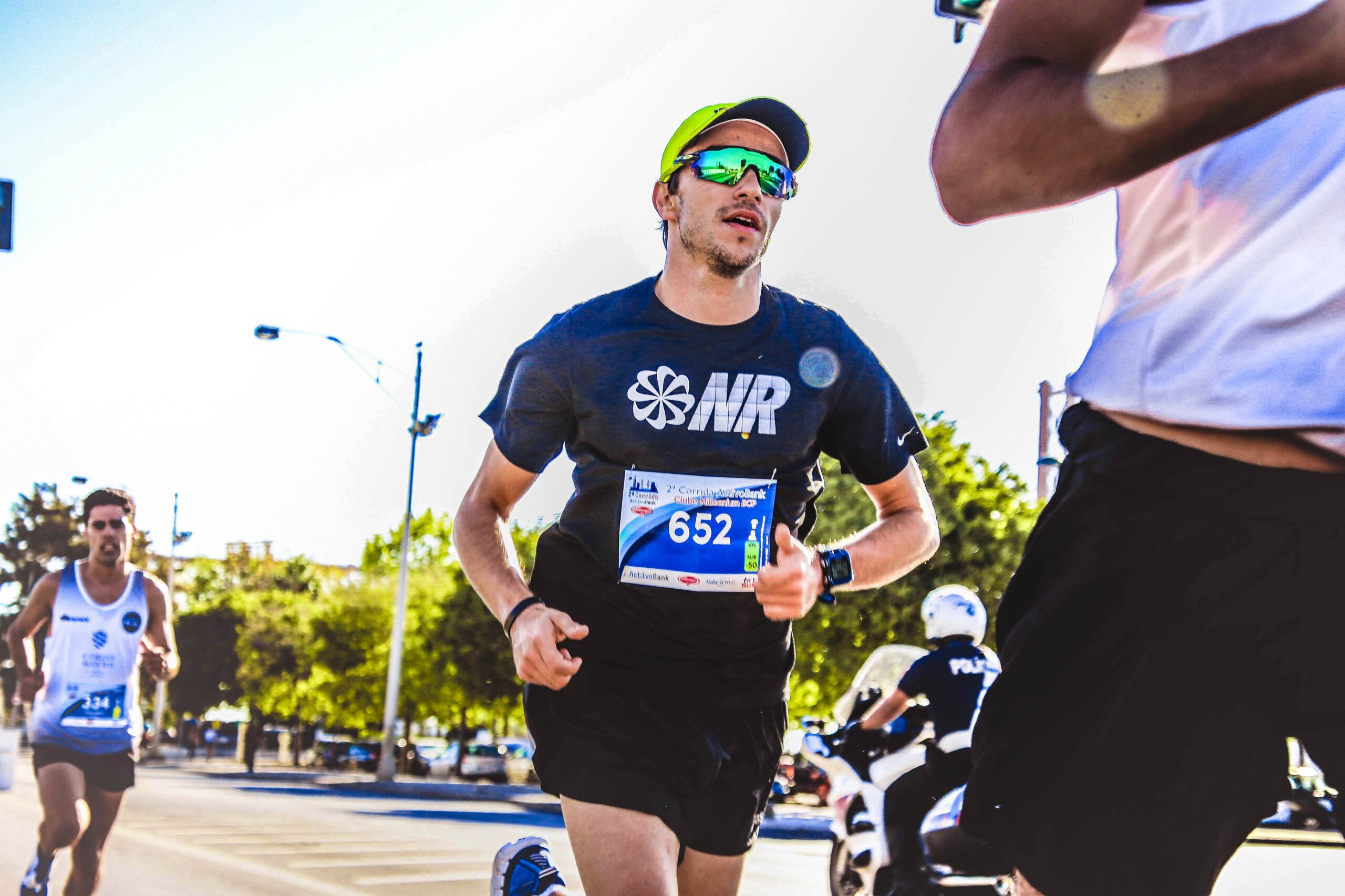Ultra marathon

Overview of Ultra marathons
What Defines an Ultra marathon?
An Ultra marathon, which can also be referred to as ultra distance or ultra running, is a running race that is even longer than a traditional marathon.
Understanding the Distance: How Long is an Ultra marathon?
The most common lengths for ultra marathons are 50 km, 100 km, 50 miles or 100 miles. Some ultra marathons are also time-based rather than distance-based, where you run for 6, 12 or 24 hours. Put simply, any running race is an ultra marathon if it is longer than the traditional 26.2 miles or 42.2 km marathon.
Training for Your First Ultra marathon: A Comprehensive Guide
Developing an Effective Ultra marathon Training Plan
Unlike some of the races that are shorter distances, an ultra marathon cannot be a last minute decision. Ultra marathons require deliberate and systematic training in order to avoid injuries and to have the endurance to feel strong as you cross the finish line. We recommend creating a training regimen at least 6 months before the ultra marathon event that you wish to compete in. Here are some key elements that you should incorporate into your training plan:
- Gradual Progression: Your will need to build endurance and increase the length of your runs progressively. Start with shorter distances, and then gradually increase the length and the duration of your runs. It is recommended that as you increase your mileage every week, do not increase it by more than 10% as overtraining and exhaustion can cause serious injuries.
- Back-to-Back Runs: The stamina and endurance needed to complete an ultra marathon is unlike any other running race. In order to prepare for the fatigue that you will likely experience while ultra running, it is recommended that you plan longer runs on back-to-back days. This will help to prepare your body for the fatigue that may occur during the race, and will train the body to recover and continue to push forward.
- Cross-Training: It is essential to strengthen your body’s overall fitness, flexibility, mobility, and strength to reduce the risk of injury. Additionally, strengthening other muscles, joints and ligaments will actually make you a better runner. Focus on strengthening your hips, glutes, legs and core.
- Mixed-Terrain Training: Ultra marathon routes usually have a variety of terrains and inclines including dirt roads, rocky trails, hills with steep inclines and downhills. It is important to run on different terrains and inclines as a part of your training. You should incorporate at least one day of hill training per week and if you do not have access to outdoor hills, you should do your hill training in other ways, such as intervals of walking or jogging on a 10% incline on a treadmill.
- Speed Work & Interval Training: While completing an ultra marathon is more about a slower, steady pace to help you continue running for hours, it is important to include speed work and interval training (sprints) in your training regimen. This helps build your endurance and improve your body’s ability to recover after harder pushes that increase your heart rate.
- Recovery and Rest: Proper recovery is crucial for ultra marathon training. Schedule regular rest days to allow your body to repair and adapt to the training stress. Adequate sleep, nutrition, and hydration are also vital for recovery.
- Nutrition and Hydration: It is not as easy as you may think to develop a nutrition and hydration plan to sustain energy levels during the entirety of an ultra marathon. Practice fuelling and hydration strategies during your training to determine what works best for you to keep your endurance and stamina throughout the duration of the run.
- Mental Preparation: Ultra marathons are not only physically demanding, but also require mental strength to keep you motivated throughout hours of running. Make sure to focus on some mental training in addition to your physical training, such as practicing visualisation, positive self-talk, and mindfulness to enhance focus, resilience, and motivation.
Building a Solid Base for Endurance
While we usually recommend at least 6 months for a training program, it really depends on your fitness and endurance level when beginning your training. You need to give yourself the appropriate amount of time to adequately train and be prepared for the ultra marathon event.
The main focus of your training for an ultra marathon should be endurance. Rather than trying to finish in a specific time, like in a marathon, ultra marathons are about running at a lower intensity so that you can sustain your energy and run for the entirety of the race.
Before you dive into your ultra marathon training routine, you should be able to run for an hour comfortably. Then, we recommend a gradual progression by increasing your total distance by 5 to 10% each week. The beginning of your training is about building a solid base, which means focusing on adding mileage each week before you begin the other parts of ultra marathon training – cross training, interval training, speed work and hill training.

Optimising Training Intensity for Ultra marathons
Running for such long distances can easily cause fatigue, burn out and injuries. Therefore, it is crucial that you do not train at too high of an intensity. This means you may feel like you are running slower than your normal pace – this is completely normal! It is important to pay attention to your heart rate, and your ‘aerobic zone’ so that you are able to sustain a steady pace throughout the entirety of the run.

Unleashing Your Potential: Key Strategies for Ultra marathon Training
Unskippable Long Runs: How to Make the Most of Them
Long runs are critical to your ultra marathon training in order to build up your endurance and be adequately prepared for the event.
To help mimic the fatigue and tired feeling that your legs will feel during the ultra marathon, it is important to incorporate back-to-back long runs in your training. For example, running 17 miles on Saturday, followed by 12 miles on Sunday.
Just like your overall weekly mileage, the length of your back-to-back long runs should also gradually increase. Of course, do not plan back-to-back long runs too close to the ultra marathon event, as you do not want to be burnt out on race day.
If possible, try to complete your long runs on mixed-terrain and mixed-interval paths, as that is what you will experience at the ultra marathon event.
Specific Training for Steep Ultra marathons
Training for an ultra marathon with a steep course relies on having more incline focused training sessions in your program. Training on different kinds of terrain will also help you to prepare for steep courses.
When training, gradually increase the intensity by which you walk or run up an incline week by week. It’s perfectly fine to alternate between walking and jogging at first as you begin to acclimatise to the intensity of the incline and your heightened heart rate.
Fuelling and Hydration: Testing Your Strategy
People often forget that fuelling and hydration during an ultra marathon requires adequate planning and a process of trial and error. It is important to use the long runs in your training program as a time to learn which types of fuel and which amounts of fuel keep you feeling strong while running.
When running for hours, our body’s glycogen stores run out and cause a lack of energy and fatigue. A quick carb source like endurance gummies or gels are commonly used among ultra marathoners to keep the body sufficiently fuelled.
It is important to learn what fuel makes you feel good. Maybe the gels give you a stomach ache, and you would hate to find that out the day of the race. Also, when running for as long as 24 hours, you may want to mix up your fuel sources so you are not only having 20+ packages of gel.
Nutrition is of course personal and individualised, but a good rule of thumb is to refuel your carb sources every hour after the first hour on running.

Wisdom from the Pros: Insights from Professional Distance Runners
While your training program can be perfectly planned, the ultra marathon event can have many uncertainties that you are not prepared for. That’s why we’ve gathered information and advice from professional ultra marathon runners for you.
- Just finish.
- Your only goal for your first ultra marathon event should be to finish. How long it takes does not matter. Just focus on crossing that finish line in a strong, healthy way and without injury.
- Starting out too fast and burning out in the middle of the ultra marathon is a common mistake. Go slow so that you conserve your energy for the final hours of the race.
- Focus on the experience, on the environment and your surroundings, especially if it’s your first ultra marathon. Take the opportunity to learn how your body is feeling throughout the various terrains and at each hour. This will only better prepare you for the next ultra marathon event you participate in.
- Find your why.
- An ultra marathon requires a ton of positive mental strength to keep you motivated and determined to keep pushing through, regardless of how exhausted and fatigued you may become. It is not about ignoring your body’s cues, but how to motivate yourself to take a walking break, rather than completely give up. This is why professional ultra marathoners recommend finding your why. Why did you choose to participate in an ultra marathon? What is the point of it for you? What does it mean to you? When you remind yourself of your why, you will be motivated to keep pushing.
- No matter how fit you are, your nutrition is essential to you completing the ultra marathon.
- When running for hours, it is important to have diversity in the foods and liquids you choose to refuel with. Know what foods your stomach can handle while running, and listen to your body during the race.
- Familiarise yourself with the terrain.
- It is always helpful to know the specifics of the course you will be running on – where the hills are, how steep they are, where the aid stations are, etc.

Injury Prevention: Incorporating Strength Training
Our bodies are made up of a wide variety of muscles, joints, ligaments, bones, etc. If you only incorporate running into your ultra marathon training, you will leave yourself prone to injury. By only running, the same muscles, joints, ligaments are used over and over again, while others are neglected and never strengthened. Therefore, it is essential to incorporate strength training and cross training into your ultra marathon training routine.
By incorporating other exercise and fitness activities, such as strength training, swimming or yoga, you will expand and strengthen your overall mobility, flexibility and strength.
Strength training and cross training will help you maintain your form and strength even as the muscles that are predominantly used while running will become more and more fatigued throughout the ultra marathon. Cross training allows you to be a more well-rounded athlete, which will ultimately make you feel much stronger when you run across the finish line.
If you choose to work with a personal trainer to help you with your strength training, we recommend that you work with someone who has experience with training runners. They will be able to give you a training program and guide you through exercises that are specifically helpful for long-distance running.
